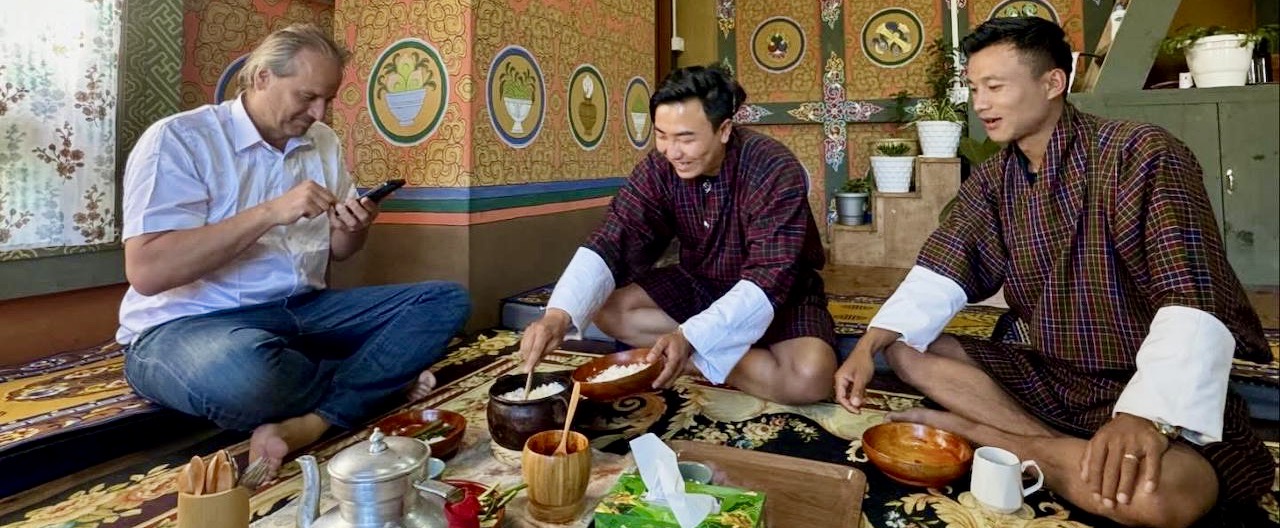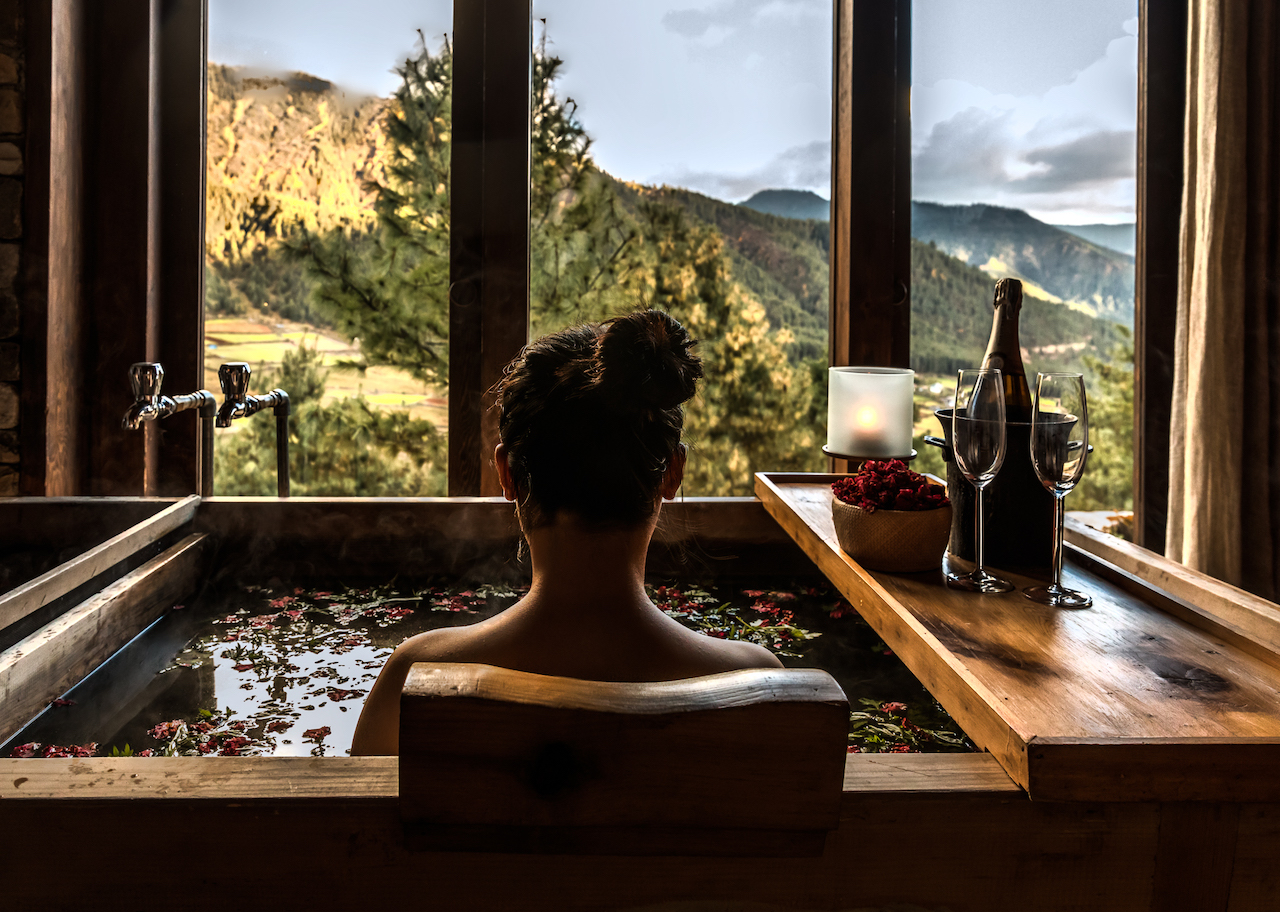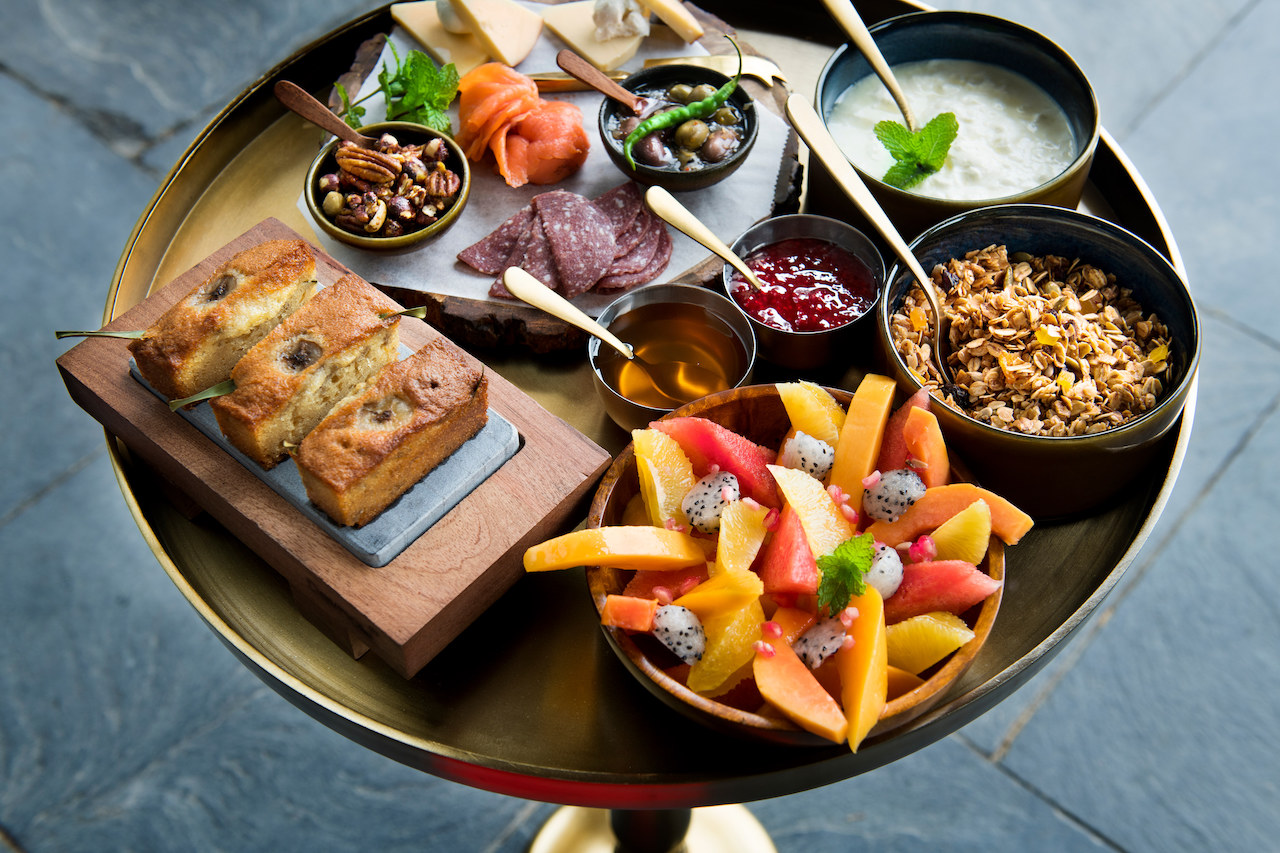You can contact us by e-mail or phone
from uk
01405 862917
outside uk
+44 1405 862917
01405 862917
+44 1405 862917
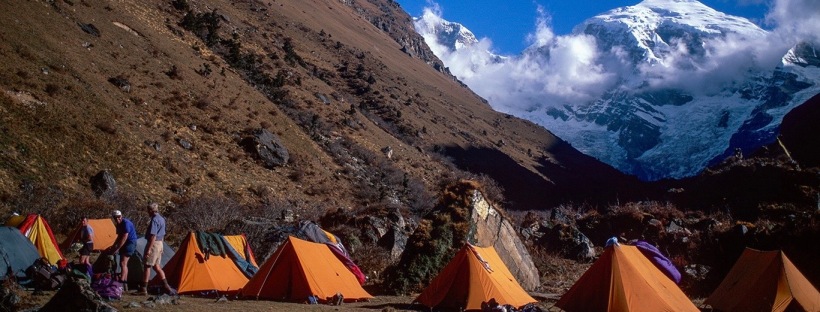
Camping on a Bhutan Trek
Snow Cat Travel - A UK registered trade mark
Trekking in the Bhutan Himalaya is a little bit different than trekking in Nepal.
If you’ve trekked in Nepal then perhaps the two biggest differences are:
1. The trekking trails are much, much quieter.
The main reason the trails are quieter is that far less tourists visit Nepal than visit Bhutan, so there are far less trekkers. This is because unlike Nepal you cannot trek independently, the Bhutan Sustainable Development Fee charged per person per day keeps the number of trekkers down to a minimum and is in line with Bhutan’s approach to tourism, “high value, low volume, minimal impact”. The second big difference indirectly keeps the number of trekkers lower too.
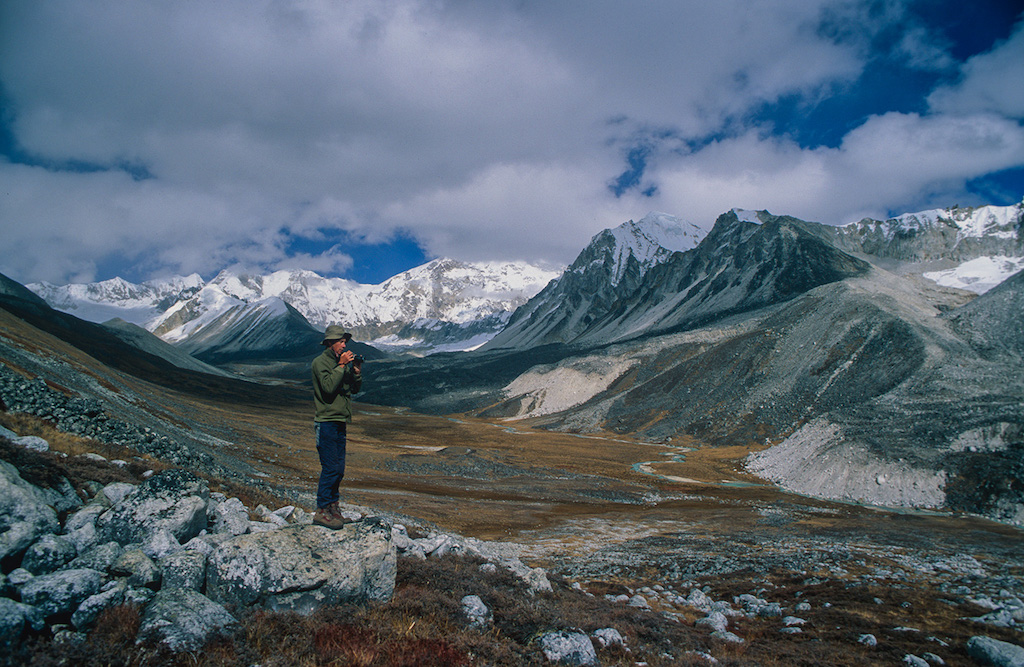
2. There are no teahouses (trekking lodges) in Bhutan
In Nepal (other than very remote regions) many treks have trekkers lodges where you can overnight, some like Gorak Shep (near Everest Base Camp) at around 5500m are probably the highest “hotels” in the world and are much higher than the usual human habitable zone too.
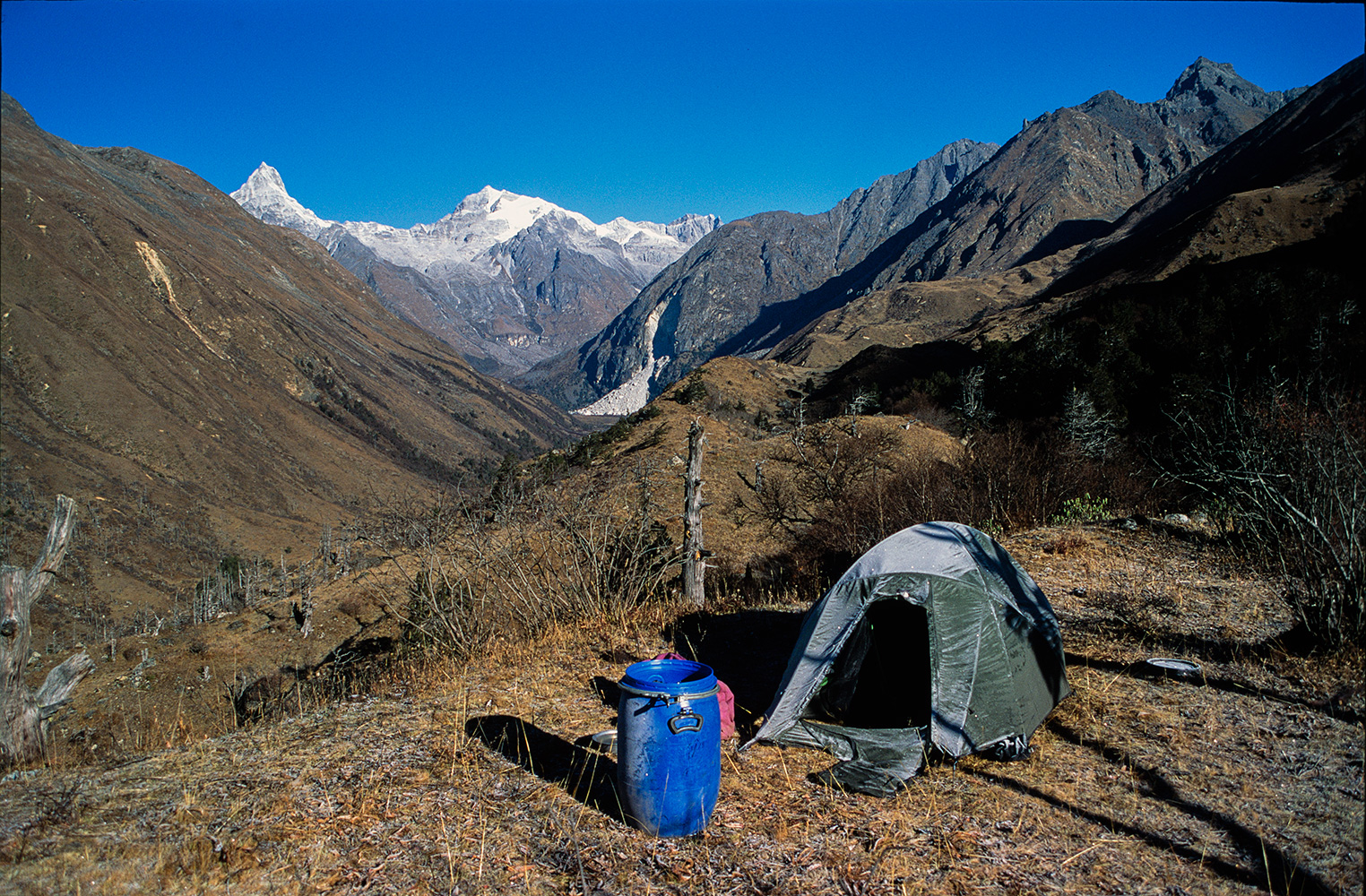
In Bhutan a trek into the Himalaya is fully supported camping only. Remember Bhutan doesn’t allow independent visitors (you have to travel with a licensed tour operator), so you can’t independently trek in Bhutan and do self-supported camping either.
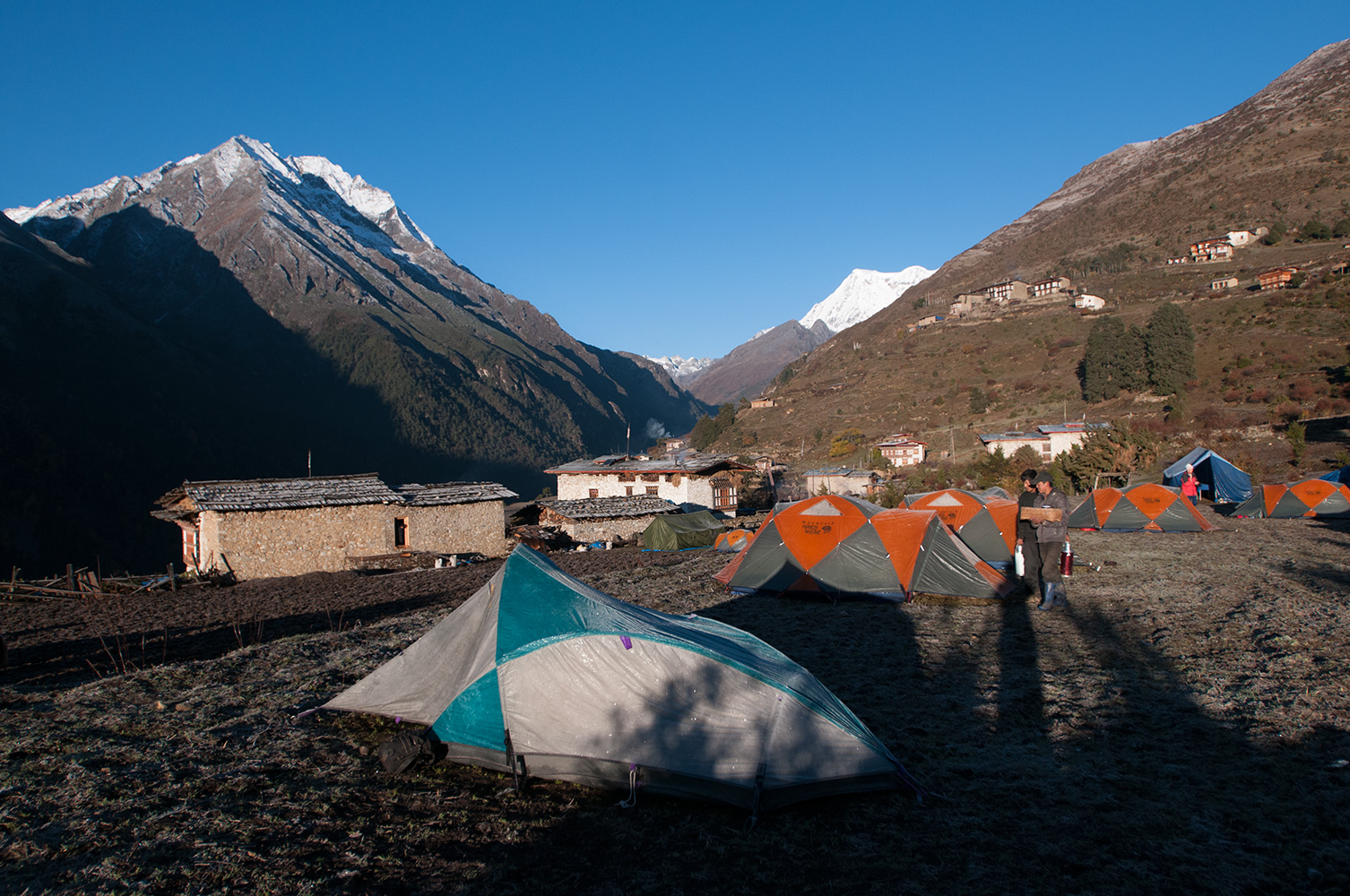
Well, as the title suggests it is just that, “fully supported”, other than walk and bring a sleeping bag everything else is taken care of for you.
Bhutan is sparsely populated and most Bhutan treks into the Himalaya are beyond human settlements and often higher than yak grazing areas too.
So, it’s very much a self-sufficient expedition. No shops along the way…everything needed has to be brought on trek and all rubbish brought out too.
But, you’re not erecting and dismantling your tent, you’re not doing the cooking and the washing up and you’re certainly not carrying heavy loads either – just your usual daypack.
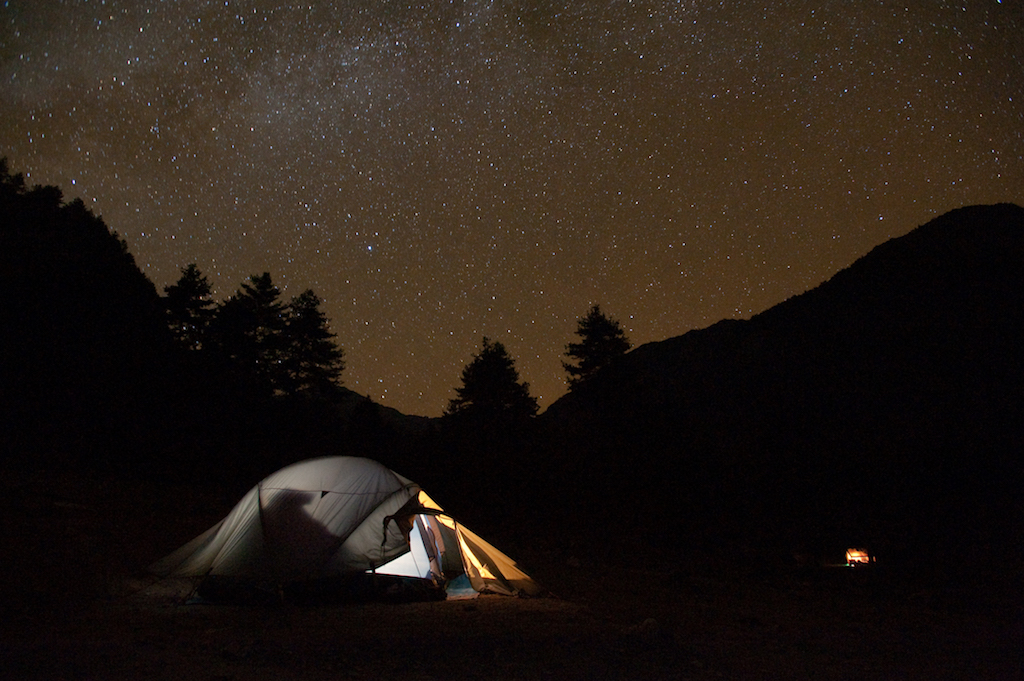
EVERYTHING ON A BHUTAN CAMPING TREK IS DONE FOR YOU
So, all camping equipment etc (except a sleeping bag) is provided and as well as a licensed Bhutanese trekking guide, you’ll have a support team to take care of everything. Making camp, preparing all the meals, breaking camp and leaving no trace is all taken care of.
Actually it’s not dissimilar to a trek in Nepal where there are no teahouses and so camping is the default option.
However, in Bhutan they tend to use pack animals (yaks/ponies) to carry all the necessary equipment, supplies and your main baggage instead of human porters.
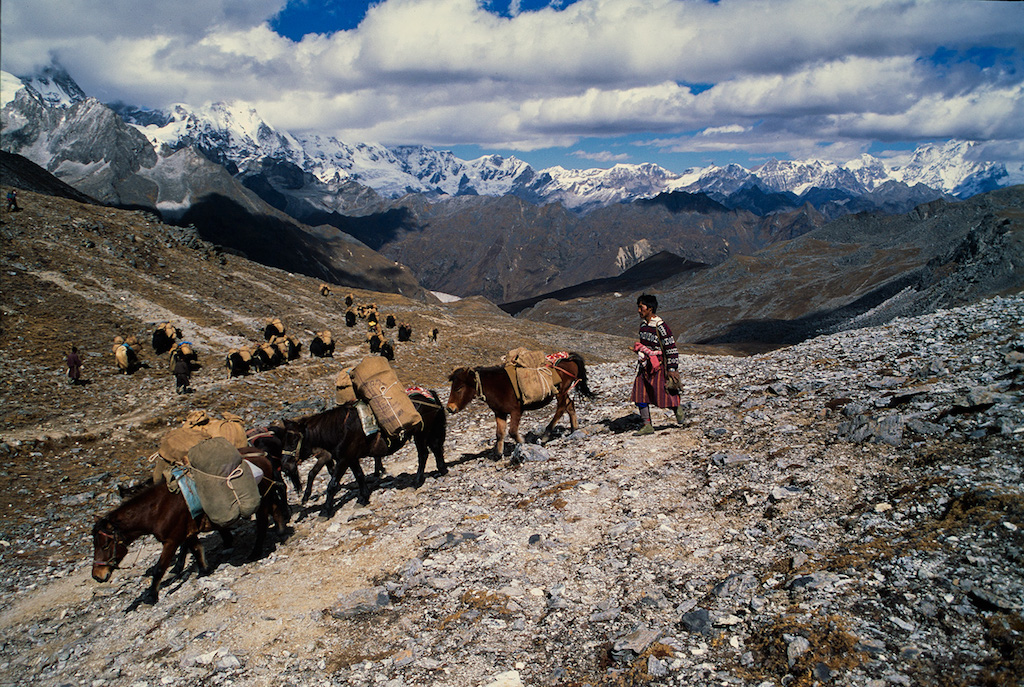
Toilets? Well, of course there aren’t purpose built toilets. Rather there will a be a latrine. In other words a hole dug in the ground, with a latrine tent for privacy.
There aren’t showers either. But, your support crew will provide you with bowls of hot water to wash creatively.
Where do we eat? There’ll be a mess tent for dinner and breakfast, complete with a table and chairs and of course all the cutlery and other utensils you need.
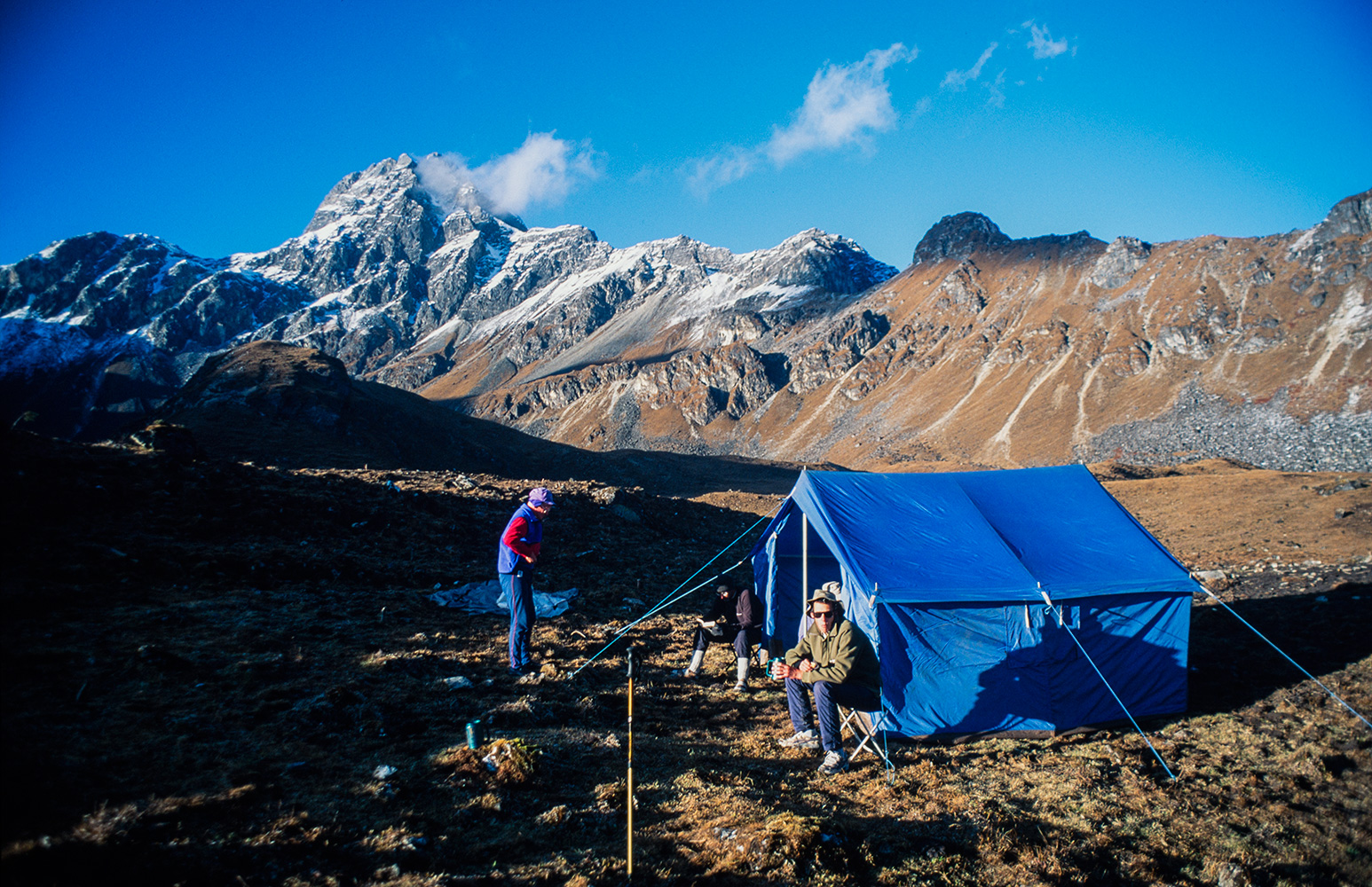
Your support crew will provide a “waiting on” service. Lunches tend to be more of an al fresco picnic affair.
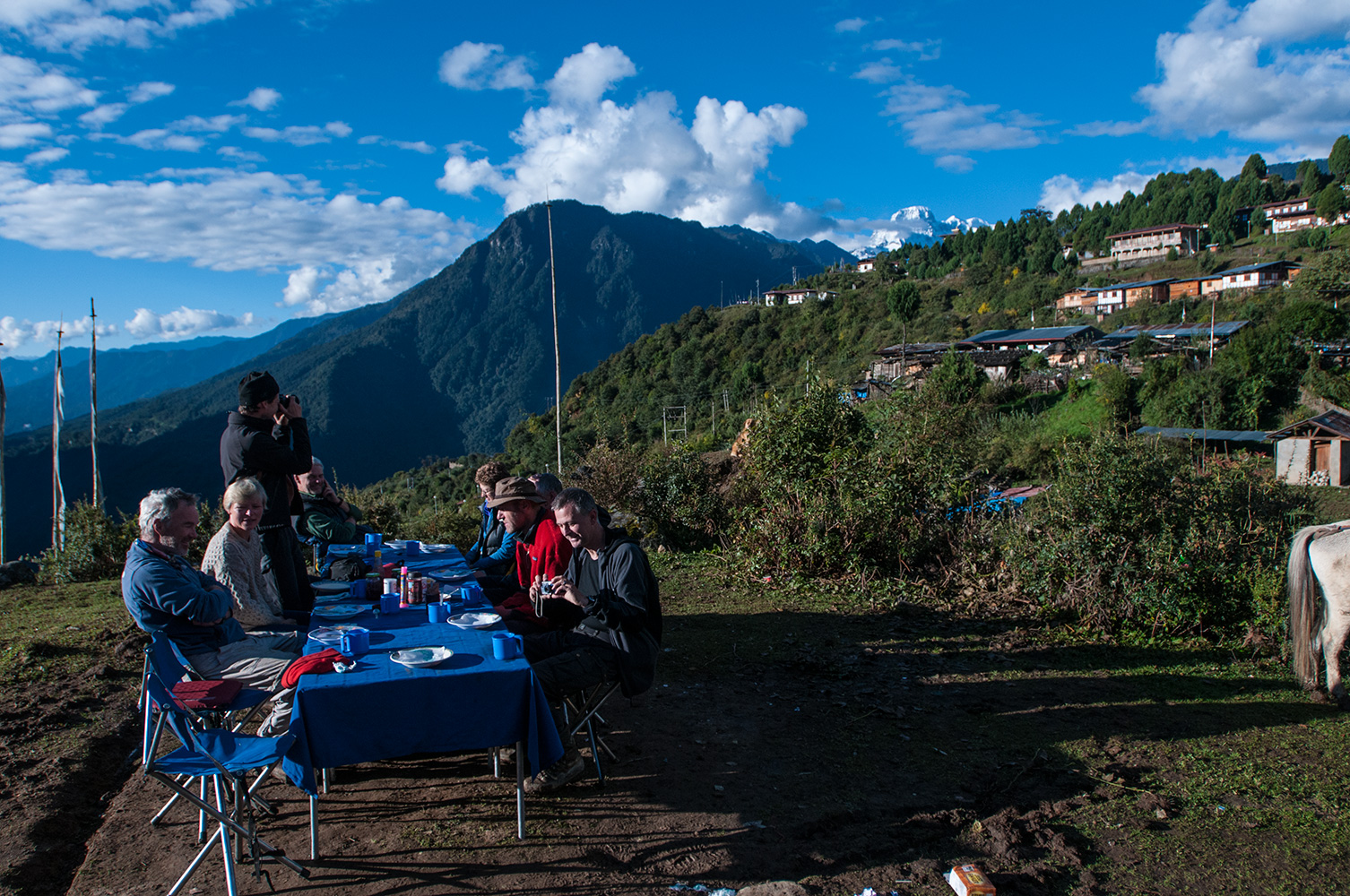
You’ll enjoy this, starting the day with a hot brew as in the morning you’ll be brought “bed tea” to your tent.
As you wake up you’ll no doubt hear the sounds of your crew preparing breakfast.
A bowl of warm water will be brought to you for washing.
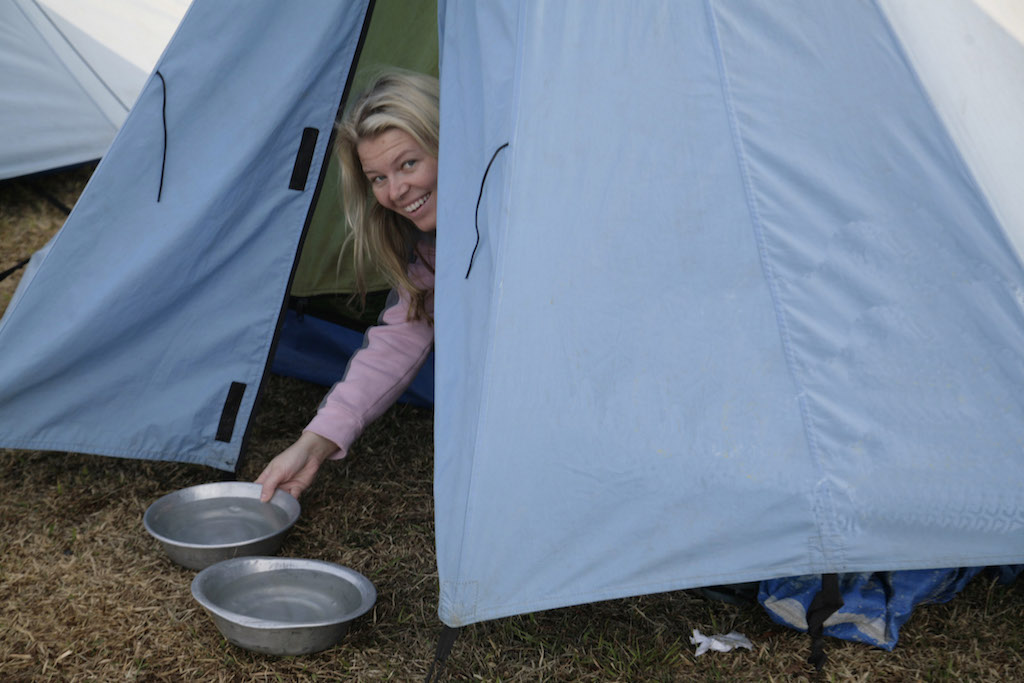
Once breakfast is ready you’ll usually eat this in the mess tent and meanwhile some of the crew will be beginning the process of dismantling camp. It’s likely that before taking breakfast you’ll need to have packed up your main baggage so it can be loaded, as part of the team may trek ahead to the next camp location.
After breakfast, it’s time for you to head out on trek with your Bhutanese guide. Some of the team will remain behind until camp is fully dismantled, latrine hole filled, animals loaded and a check that there is little if any trace of a camp being there at all e.g rubbish collection, general tidy up etc.
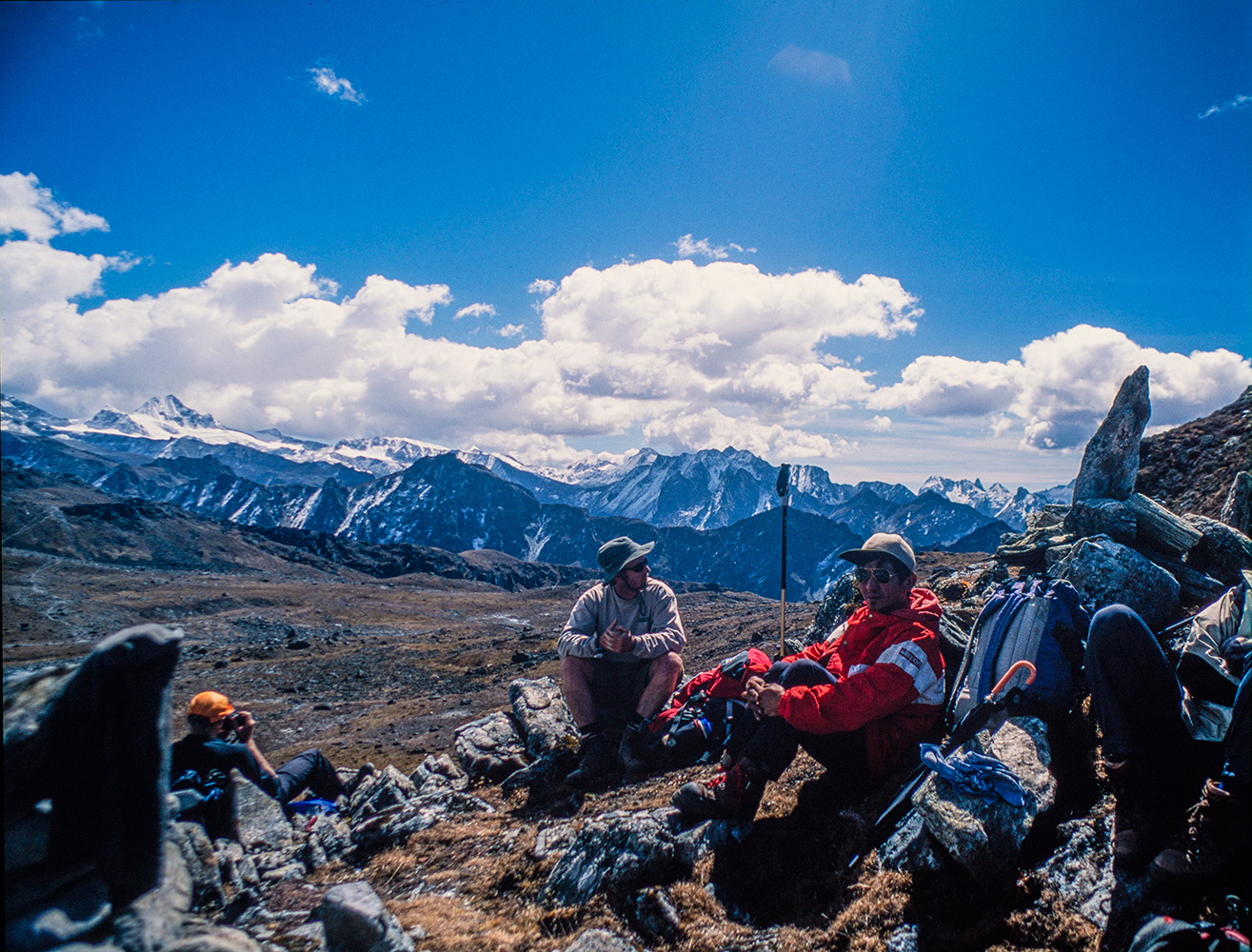
Along the days trekking route you’ll stop for a picnic lunch and it’s probable that during this time the rest of the team will overtake you and be heading to the overnight location to prepare the next camp.
After a leisurely lunch you’ll head off on trek again to ultimately reach your next overnight camp.
In most circumstances by the time you arrive the camp may be fully or partially erected and the kitchen team will have juice and/or a hot brew ready for you.
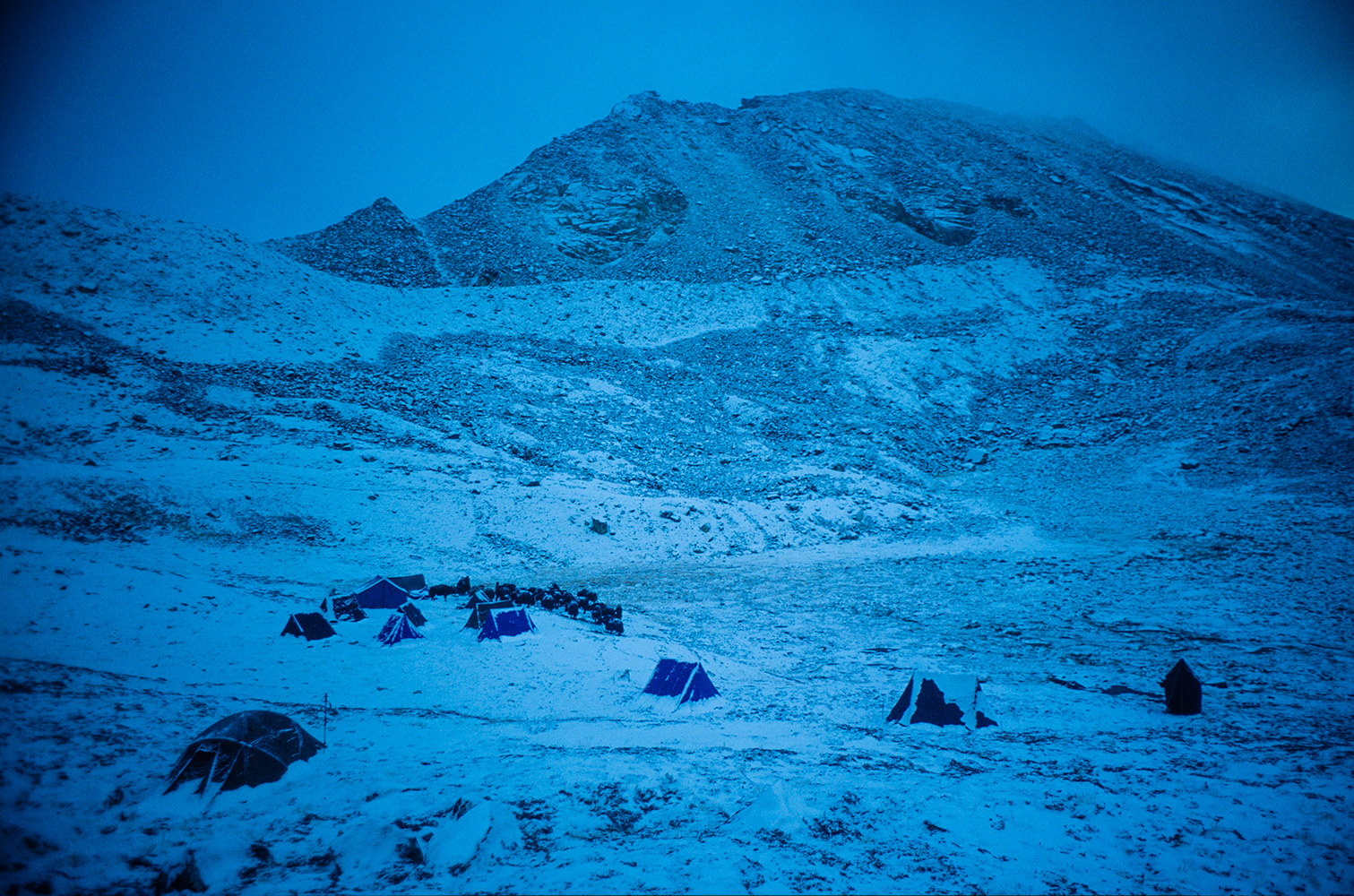
You can relax after the days trek, perhaps change into some warm clothing, relax or have a wander and explore your new and probably quite wild surroundings It can and does get very cold at night in the Bhutan Himalaya so do make sure you wrap up accordingly.
A bowl of hot water will be brought to you for a wash.
Meanwhile the kitchen crew will have been busy preparing dinner and once ready it’s time for you to head off to the mess tent to enjoy a tasty camp supper.
It is of course up to you when you decide to retire, but on trek an early start and a good nights rest are both highly desirable.
Then you wake up and start all over again.
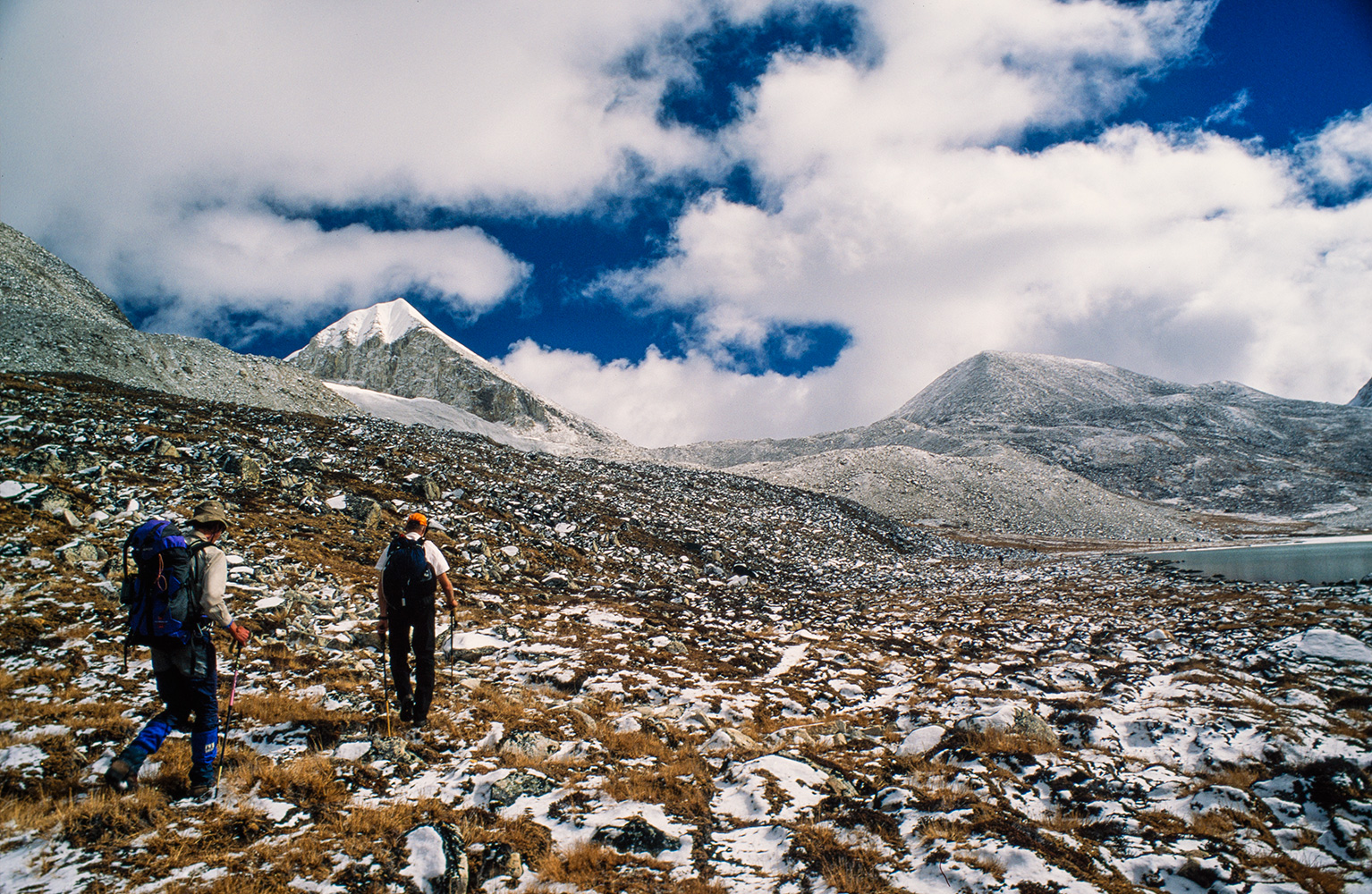
DISCOVER OUR RANGE OF CUSTOM BHUTAN TREKS
This article was originally published on the Snow Cat Travel WordPress Blog
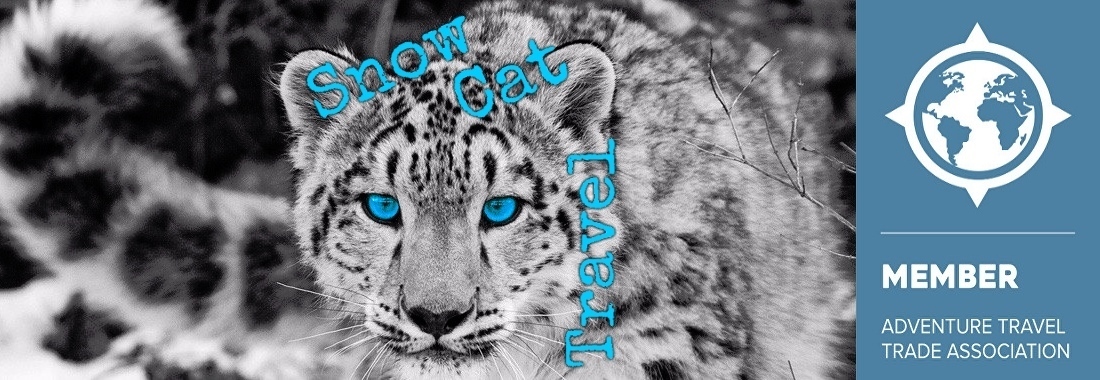

All rights reserved. Snow Cat Travel is a Registered Trade Mark UK 00003289264

